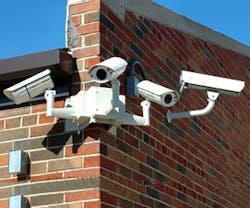Stop Workplace Shootings By Upgrading Security Technology
New technologies are supplementing tried-and-true security strategies to deter potential mass shooters, delay them from reaching would-be victims and reduce the amount of harm they can do, potentially buying valuable time for emergency responders to get to the scene. Review your workplace security practices to see where you can make risk assessment updates – if the worst happens, strengthening your facility could save lives.
SEE ALSO:
Using design and technology to create safer schools, especially the new Sandy Hook Elementary
Baseline Security Requirements And Solutions
Every building needs to cover its bases in three key areas: access control, intruder detection and mass notification, explains Tom Komola, a security expert for Siemens and former MIT Security Manager and Massachusetts Bay Transportation Authority Security Superintendent.
Access control should include programmable key card access at every door, especially at a school, where keeping an intruder from forcibly entering a classroom could save many lives and buy time.
Intruder detection is linked to the access control system. “The card reader should also know if the door is open and whether it has been opened legitimately or forced,” Komola explains.
Mass notification requires not only a functioning, multi-channel notification system, but also a team that’s familiar with the system and comfortable reprogramming it on the fly, Komola says. “Not unlike a fire alarm, a mass notification system should have the ability to directly alert the police department and notify them that there’s an issue, in addition to the administration and the principal,” Komola says. “You also want people to be trained on it, because if you only train one person and then that person is out sick or at lunch or gunned down in the hall, someone else should have the skill level to make it function properly. Time is of the essence.”
“You have to explain to the administration, staff and faculty that there’s an expectation by employees and parents that we’re going to do out very best to make the school a safe environment for work and learning. They all have to be part of it,” Komola says.
“That message needs to come down from the C-suite or the administration to indicate that what we’re trying to accomplish is important to them and that they have expectations that you’ll help them make the environment safe and secure,” he notes. “We can put bars and locks on the doors and bars on the windows, but if the back door is propped open for a delivery to the cafeteria or the front door is locked for some reason, it negates all of the training and practice efforts.”
Innovative Security Approaches
In recent years, newer workplace security technologies have made it possible to respond faster and warn people sooner during a shooting. Analytic video surveillance is “a proactive approach to security in that the camera streams and analyzes data in real-time,” explains Komola. “If an individual shows unusual habits – let’s say an individual continues to circle a school in their car or someone shows up at a playground every day for a week – the technology will alert officials to this. It picks up habits that a human surveying may miss.”
Shooter detection recognizes when shots are fired by looking for flashes of light paired with gunshot sounds. “They can notify anyone in the mass notification, card access or alarm system that shots have been fired,” Komola says. “Time is of the essence, and this technology is growing rapidly.”
Does your building need new security solutions like this? Start by examining entryways, Komola recommends.
“How easy is it for unwanted individuals to gain access?” he says. “Are there entryways where it’s easy for someone to slip in unnoticed? Beyond those quick assessments, I’d recommend that most facilities managers get in touch with local law enforcement. They know the vulnerabilities as well as anybody, and more often than not, they’re happy to come in and help you out because they want to be part of the solution. You don’t want to make those introductions in the middle of a crisis.”
About the Author
Janelle Penny
Editor-in-Chief at BUILDINGS
Janelle Penny has been with BUILDINGS since 2010. She is a two-time FOLIO: Eddie award winner who aims to deliver practical, actionable content for building owners and facilities professionals.

